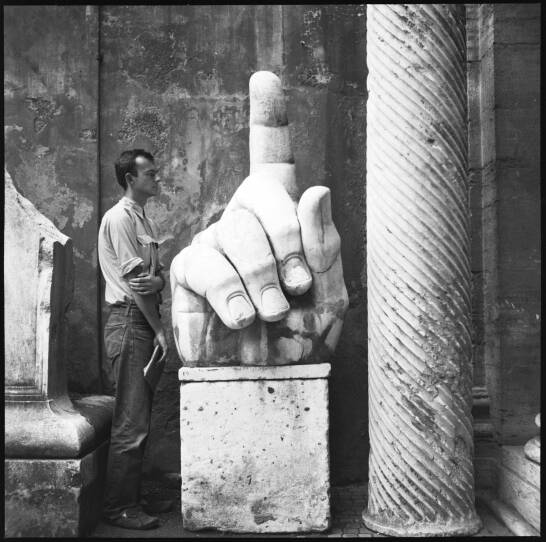Every week, GBH Executive Arts Editor Jared Bowen shares the latest in arts and culture with GBH’s Morning Edition. This week, a famous composer takes to the stage and a visual artist's career is revisited, plus an introduction to art collecting on a budget.
“Preludes”
Now playing at the Lyric Stage Company of Boston through Feb. 5
Inspired by the life and music of composer Sergei Rachmaninoff, "Preludes" begins during a three-year creative block that arose following a disastrous concert experience and follows the composer’s journey towards expression. Along the way, Rachmaninoff encounters the likes of Tchaikovsky, Chekhov and Tolstoy — contemporaries among whom Rachmaninoff is “trying to find himself in that orbit.”
The production quite literally “is really taking us into the artist’s mind and even body in the small confines of the Lyric Stage Company,” Bowen explains, featuring the sounds of a steady background heartbeat and a look into Rachmaninoff’s time utilizing hypnotherapy in an attempt to reinvigorate his creativity.
Playwright Dave Malloy wrote "Preludes," integrating his own original compositions and the real-life works of Rachmaninoff into the program. Audiences may recognize Malloy for his work creating "Natasha, Pierre & the Great Comet of 1812" or for his adaptation of "Moby-Dick," which premiered at the American Repertory Theatre in 2019 .
“Making Past Present: Cy Twombly”
On view at the Museum of Fine Arts from Jan.14 through May 7

The works of artist Cy Twombly are largely considered “incredibly contemporary” for their trademark stylistic “scribblings.” However, the artist affirmed throughout his career that his art was deeply informed by antiquity; having spent time in Italy shortly after graduating from the School of the Museum of Fine Arts, Twombly said that “for myself, the past is the source, for all of art is vitally contemporary.”
This new exhibit at Boston’s Museum of Fine Arts — which is offering free admission on Monday as part of its annual Martin Luther King Jr. Day Open House — brings together classical art and that of Twombly in “one of the first shows to really look and make these very visceral connections between how Cy Twombly created and the ancient artifacts that inspired him,” Bowen says. Highlights from the collection include items from Twombly’s Rome apartment, which the team behind the exhibit explained are usually not seen in museums.






